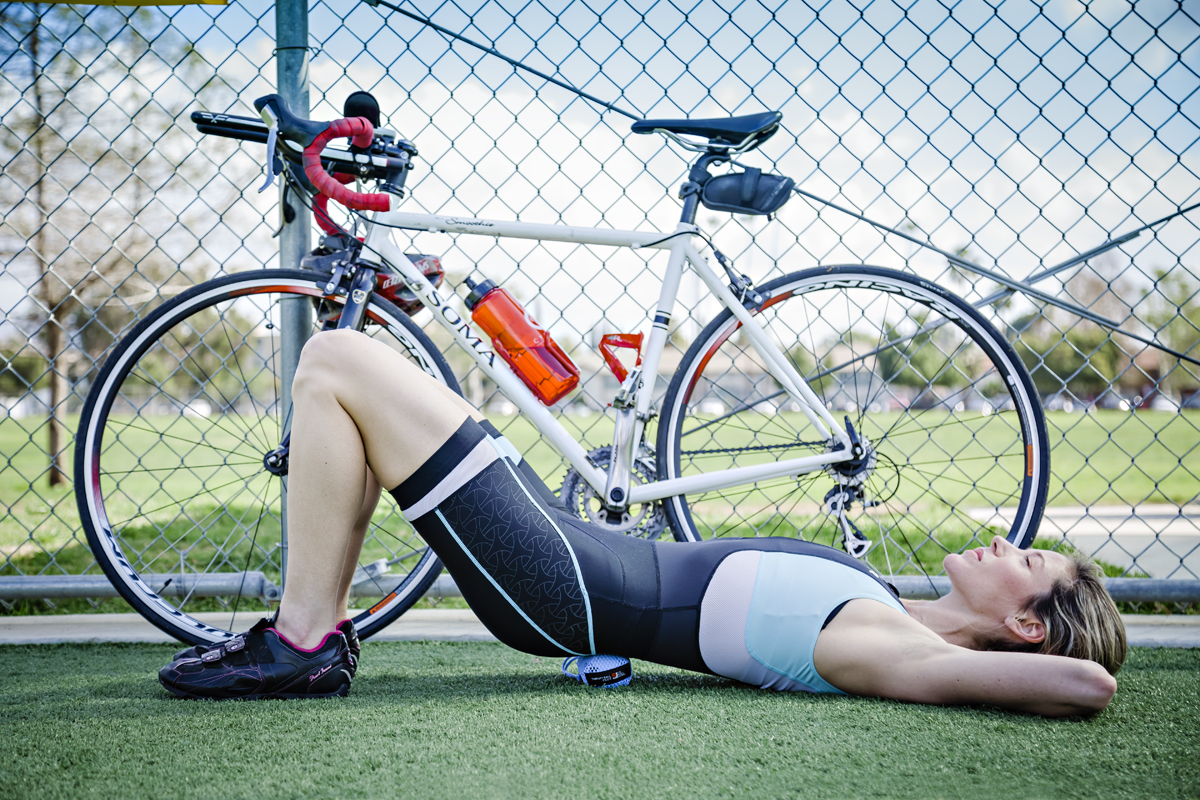
Regardless if you prefer long bicycle rides on scenic country roads, or challenging yourself on a mountain bike trail, the experience is probably associated with a sense of freedom and simplicity. A feeling that can easily be interrupted by a flat tire or pain somewhere in your body.
Comparing the human body to a machine is in some ways an outdated analogy, but in this case maybe relevant. If you are a serious cyclist you pump your tires before your head out. You also clean your bike, lube your chain and adjust your gears on a regular basis to make sure that every ride is as smooth as possible. The question is do you give your tissues the same treatment? Hydrating before, during and after a ride is similar to pumping your tires. But in order for your tissues to absorb the water you’re drinking you need to stimulate your fascia in various ways. If not, there is a risk that your dehydrated tissues result in decreased “slide and glide” or joint compression, which in turn can lead to aches and pains. Something that can ruin your next biking experience, just like a flat tire would.
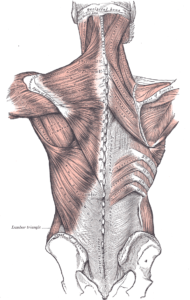
In order to understand this analogy it’s important to take a closer look at what fascia is and what it does. Fascia is a form of connective tissue made up by cells, fibers and fluid. The fascial system is like a three dimensional web that ranges from head to toe without interruption. It surrounds and penetrates muscles and bones. It also creates a link between your skin and your tissues. It’s a sensory organ as well as system that connects, protects and provides support. Your fascial web adapts to how you position your body and how you move, which means that long hours on the bike can create some fascial stiffness over time. Healthy fascia is soft and springy like a wet sponge. Unhealthy fascia on the other hand is dry, brittle and stiff.
Just like a dried up bicycle tire is more prone to puncture, your tissues are less efficient and more susceptible to injuries if they are stiff and sticky. The best way to counteract this is to use the Roll Model® Method Therapy Balls for self massage and gentle yoga after your bike ride. Moving or stimulating your fascia helps to improve circulation, break up adhesions and maintain fascial waves. When rolling on the balls or holding a stretch/yoga pose, you stimulate your fibroblast, a form of fascial cells, to produce more collagen and elastin. You also help move water into your ground substance, the fluid component of the fascial web. Actions that strengthen the tissues, increase pliability, decrease friction and improves joint decompression.
A typical long distance biking position puts a lot of stress on the body, which means that your fascia responds by producing more collagen and more fascial cross links to help support the muscles in your neck, shoulders, back and hips. Even though this might sound like a good idea, in the long run this can result in a rounded back and shoulder appearance off the bike. In addition to this your psoas major, on the front of your hips, or your hamstrings, on the back of your thighs, might pull your pelvis into an exaggerated anterior or posterior tilt, which in turn effects your lower back. Adding some simple yoga poses and self-massage techniques after a long ride will help your collagen fibers line up in a more orderly fashion, restore fascial crimp and move water into your ground substance. Ensuring that your body is as well lubed as your bike chain.
Looking for more cycling recovery tips and moves? Read Recovery Moves for Cyclists which outlines a sequence I like to use to recover from a nice long ride.


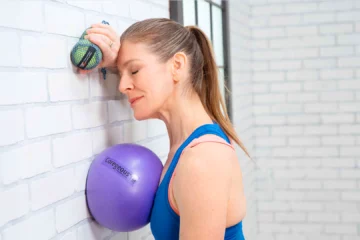
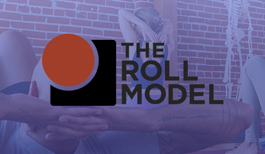



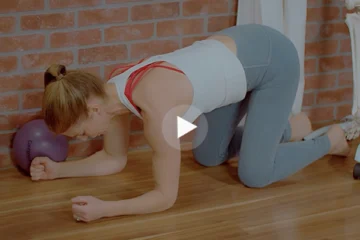
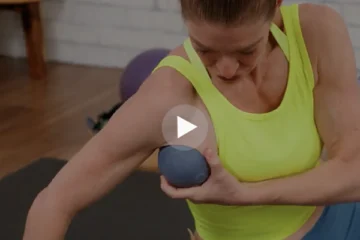


The analogy between bike maintenance (often impeccable for some of my cycling friends with various ailments) and the body is very accurate… Hydrating well, doing self-massage or yoga to maintain flexibility and elasticity of the fascias is necessary. I also read with pleasure your article Recovery Moves For Cyclists.
This is an amazing way to see and explain this !!! I will integrate those analogies . Thank you so much
What a beautiful analogy with the human body versus the bike. This article will help me explain to my cycling friends the importance of yoga practice and messages with Yoga Tune Up balls to reduce injuries and increase cycling performance.
Thanks Annelie for this post. I absolutely agree with what you say about long-distance biking position. A few years back, I started practicing long distance road cycling, once a week with a team. My aim was to develop more legs strength than yoga provided. Despite loving these rides, the speed and team emulation, the cardiovascular benefits, I actually stopped after a year, as I was dealing at the same time with a rotator cuff injury and realised the road cycling posture didn’t help getting rid of my injury… Road cycling is particularly static for the upper body and even if you can move and stretch at a few welcomed red lights stops, it does take a lot on your neck and shoulders. My sons practice MTB and DH biking and in these disciplines, at least the upper body moves much more… plus they are shaken constantly… which is good for the fascia (½ joking)… Anyway, whatever the discipline, rolling with YTU balls is clearly a must. I haven’t managed yet to convince my boys to roll… they are neither young enough nor old enough to take in a practice advised by their Mum… I’m confident however that some day they will. Thanks!
Thanks for your article. Interesting to recall the importance of fascia not on l’y the impact on muscles.
Thanks Annelie for your article ! I really like the way you make comparison in the bike and our body. It’s funny and true. As I have friends who are bike lovers, I will use the same comparison to help them understand the importance and goodness that yoga tune up and the roll model can bring to them !
I really enjoyed this blog entry and the analogies between taking care of your bike and taking care of your body. After I graduated from university I cycled around Ireland, and never thought to take care of my body. The injuries, restrictions and effects you describe are well known to me now! This article will certainly help me persuade some cyclists I know to try some yoga and rolling.
I have so many students who commute to work on their bikes these days so I appreciated both of these blog posts. I also love having another reason to nudge them about drinking more water. The idea that we are made up of so much water and that a lot of that water is in our fascia and will give us a more springy feeling if it stays nourished seems like a great argument for keeping hydrated. Cyclists especially seem to suffer from tight IT bands so I am curious if drinking more water would actually help them with the TFL (especially in conjunction with self massage on the YTU balls).
Thanks for all the info! So helpful
I never thought about having to stimulate the fascia to move the water around to get the full benefits of the hydration. Thank you for that!
“in order for your tissues to absorb the water you’re drinking you need to stimulate your fascia in various ways.” This was a cool lesson! Didn’t realize you could catalyze hydration with massage/stretch.
Thank you for your article, I am about to buy a bike and start riding this summer. Explaining to me on what to expect and how I can relieve a cramped body and get bk on the road. I am looking forward to many years biking in a healthy and knowledgeable manner.
I had to read this article as I enjoyed the “Recovery Move for Cyclists”.
Your comparison of the “bike maintenance” to “body maintenance” really hit home for me. We put so much time and attention into picking the right bike and taking care of it, yet for get the importance of do the same for the ‘machine’ that POWERS the bike!
=:0)
Amazing analogy of the dried up bike tire to dried up tissue in our internal and external bodies. I’m hoping to acheive glow the good new fashion way of properly rolling.
Being a cyclist myself for years I can attest to the importance of hydration. I notice a huge different when I am well hydrated before a ride. Your body just doesn’t move well without water. Great reminder of our fascia and why we need to stay hydrated.
Yes! I would like more info on rolling after cycling please!!
Thanks for informative article. My husband just ordered a tandem bicycle for the summer, so keeping my body as well oiled and lubricated as my bike is great advice!
Thank you Annelie!
A great simple explanation of fascia. I want to get back on my bike this coming spring/summer. So i will be doing some extra rolling once it stops snowing and raining here by Lake Tahoe California.
Looking forward to being the only integrated YTU (R) and RollModel (R) practicioner in my area. I’m slowly chipping away at it.
Being a long distance cyclist this was information i did not know about.
restore fascial crimp? I have not heard that expression before. Is it a typo?
liked the article, thank for taking the time.
Love the visual of our healthy fascia compared to a “soft & springy” sponge versus one that is “dry, brittle & stiff, as well as the example of the “dried up bicycle tire being more prone to puncture.” I don’t think we honor the stress that we put on our bodies when we are “exercising” and “how the body responds by producing the collagen and fascial cross links.” We just know think that movement is good! Thanks for the reminder to hydrate, move & stimulate our tissues in different ways.